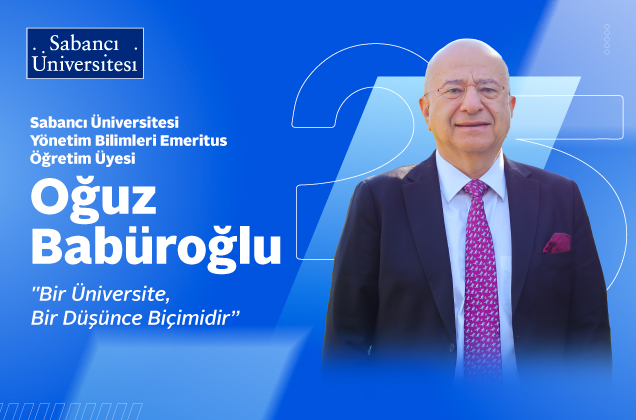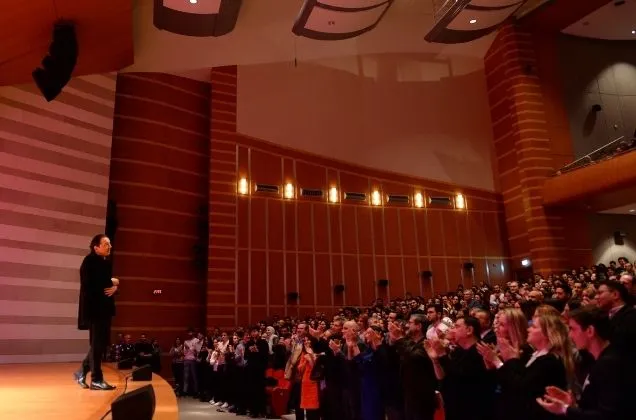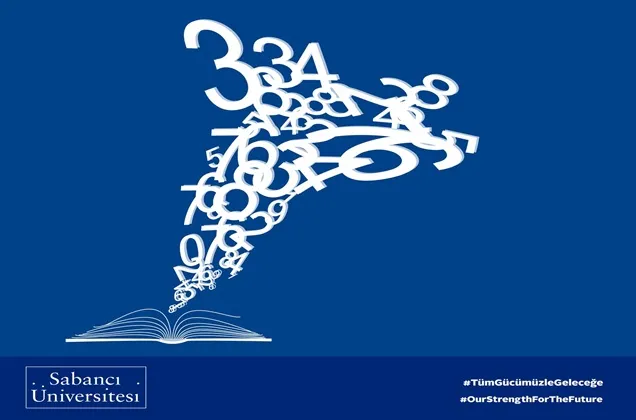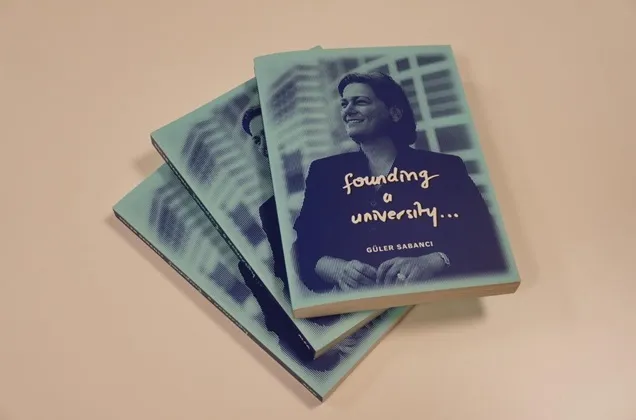07/08/2025
Prof. Dr. Oğuz Babüroğlu on Sabancı University's 25th Year
As Sabancı University celebrates its 25th anniversary, we sat down with Prof. Dr. Oğuz Babüroğlu, who has been involved in almost every step of the university's development since its founding. In his words, Sabancı University was conceived "more than an institution, it was a way of thinking and learning together." In this interview, we discussed not only the history of a university but also how a future is envisioned, fostered, and reimagined.
If we were to ask you what a special moment or turning point you have at Sabancı University, where would you begin?
I wouldn't hesitate to start with that first search conference in 1995. The university was just an idea on paper. Over the course of three days, we designed the "university of the future" with a multidisciplinary group from many countries, from Japan to Chile, Egypt to England. Students, artists, engineers, politicians, and social scientists were all in the same circle. This wasn't a typical strategy exercise. It was a process of generating a shared wisdom. And here, I believe, lies the biggest difference: The foundation of Sabancı University was laid not with buildings, but with imagination.
The most fundamental lesson I learned during this process was this: If you embed participation and pluralism in the design of a university from the very beginning, that institution doesn't just produce knowledge, it creates transformation. As emphasized in the motto "let's create and develop together" in Sabancı University's model, seeing the traces of this collective wisdom still present today is a source of great satisfaction for me.
What sets Sabancı University apart from other universities? What do you think it has contributed to higher education?
For the first time in Turkey, we established a university that dared to offer its students the courage to "explore first, then decide." The freedom to choose a program is just one of Sabancı's structural distinctions. But I think even more important is that this university has designed itself as an action research project.
We designed the university not with the traditional knowledge transfer model, but with a model of collaborative participation in knowledge. This was reflected not only in classroom learning but also in our institutional governance. We even conducted our strategic planning through research conferences. Our institutional culture was shaped by a participatory and pluralistic consciousness. You can still see traces of this participatory approach in the decisions made in every unit of Sabancı University today.
In short, at Sabancı, we established not a "higher education system," but a "learning organism." And it's encouraging to see this approach inspiring many universities in Turkey today.
How has the university progressed in 25 years? What do you think was the source of its success?
Measuring this success solely by world rankings or research output would be inadequate. Yes, Sabancı University is among the top 100 in Asia and among the top 200 globally in social sciences. But in my opinion, the real success lies in the fact that we have redefined what it means to be a university in Turkey. An adaptive system that allows full freedom to change majors within two years, every student undertaking a civic involvement project, having the highest revenue from industrial projects per faculty member, and consistently ranking among the top three entrepreneurial and innovative universities have created a new paradigm for defining a university.
Sabancı University trains its students not just for a profession, but for transformation. Concepts like entrepreneurship, civic involvement, and ethical awareness are not just course content here; they are life itself. Furthermore, through the Executive Development Unit (EDU), we have established 17 corporate academies for Turkey's largest companies. In other words, the university has transformed not only the classroom but also the business world. This area of interaction has not been established on this scale in any other institution in Turkey and has carried EDU to 34th place in the world in the "customized executive education" category in the Financial Times rankings.
If you could convey one message about these 25 years, what would it be?
This university is more than a success story; it's a design philosophy. We've proven that a model where knowledge isn't just transferred, but co-created; where decisions aren't just made from above, but sought collectively, can be sustained. If this structure we established 25 years ago has given even one person the feeling that "I too can be a part of this transformation," that's enough. But I know there's much more to it than that.
So, what kind of Sabancı University do you envision for the next 25 years?
In this new world where the world and its institutions are undergoing a transformation, I envision Sabancı University becoming not only Turkey's but the world's transformation school. Today, we're preparing C-level executives for action research-based leadership through the mART program. Tomorrow, we can extend this model to international joint doctoral programs, innovation centers, and global civil society projects.
Sabancı needs to become a reference center, especially in sustainability, digital transformation, and social justice, which must ensure equality. Because Turkey needs universities that not only offer "knowledge" but also "vision." Sabancı can do this. And it will.
In 2049, when the phrase "world-leading university in transformation" is uttered, Sabancı could be one of the top five universities that comes to mind. Because we still believe in learning together, designing together, and transforming together.




